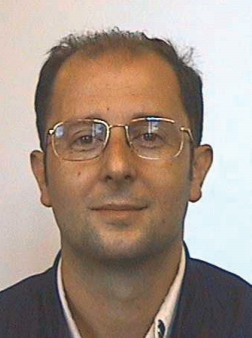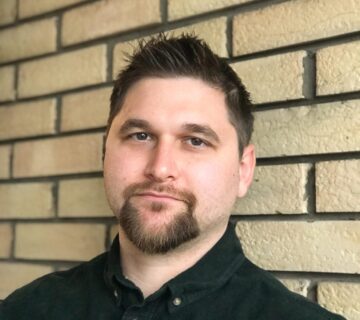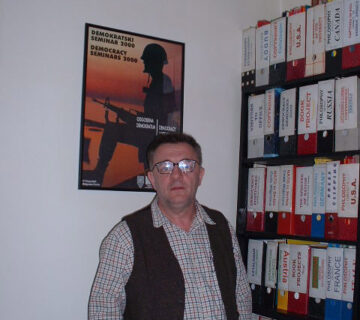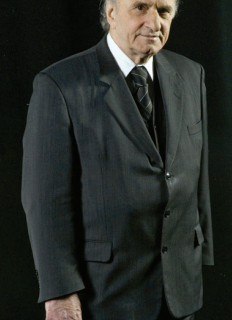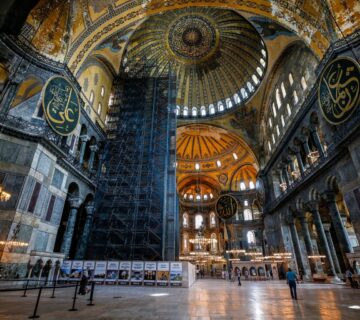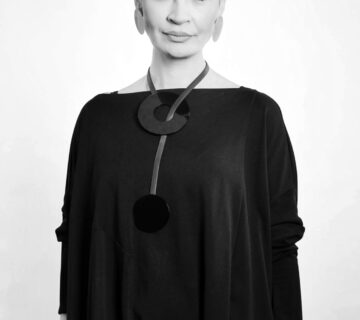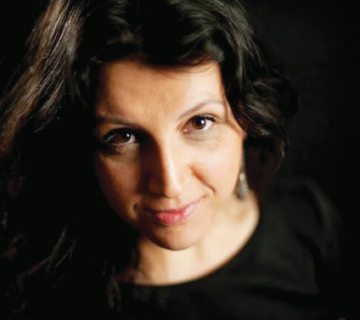Geron Kamberi is currently an Associate Researcher and works for different Albanian
think tanks. Last three years he worked as Executive Director of National Agency
for Scientific Research and Innovation, a public body entity whose main role and
responsibilities is to fund the national research projects and coordinate EU Research
and Innovation Framework Programme. He holds a MA Degree in European Politics
from Sussex European Institute – UK, and brings extensive experience from international
NGO sector working on policy issues, analytical work and project management.
He has worked for a long period as Art& Culture Programme Coordinator at Open
Society Foundation – Albania as well as Policy&Advocacy Officer of two important
international NGO based in Tirana as Oxfam GB Office and World Vision Tirana&
Kosova Office. His research abilities has resulted to of number research policy papers
written as author or co-author including several articles on EU –Albania relationships
published at national daily newspapers.
By Geron Kamberi
The Balkans is a region that has produced more history than it has been able to consume. This somewhat cynical expression sounds like a quote from an economic textbook, but is actually about the economy of conflict in the Balkans. War corroded the region in its premodern history, and it is the wars that accompanied the disentegration of the former-Yugoslavia in the mid-90s, in Croatia, Bosnia and Kosovo, that transformed the Balkans from a “paradise of ethnic co-habitation” into a hell of hate.
Young people are fast impacted by war and tragedy, but they are also quick to forget, which helps to dissolve the hatred and memory of war within. Since the early ‘90s, the Balkans has seen three decades of war, peace, cold peace, frozen conflict, and open borders or half-closed borders. It is in this context that the youth of this region, who make up about 20% of the population of their countries, have been born and raised. Though it seems this younger generation has moved far away from “powder keg” metaphors, actually all you need is a football match, a banner attached to a drone, or two hands crossed to represent an eagle, in order to trigger an explosion of real or virtual hatred on social media, where young people are active. This situation among Balkan youth seems aptly described by the novelist Erich Maria Remarque, who wrote about a generation that, “even though they may have escaped shells, were destroyed by the war.” Nonetheless, the past, although emerging every now and then in different forms, has begun to surrender its place in their daily lives, and also in their futures. There is a saying that no one is rich enough to buy one’s past, but since 2000, when the flames of war were extinguished, young Bosniacs, Serbs, Croats, Kosovars, Albanians and Montenegrins have had almost 20 years in which they have tried to “buy” their future. For the generation of 20 year-olds in the Balkans the future priority is education and employment, leaving behind prejudice and the language of hatred, and being inspired by the hope that the Balkans has a future in a Europe without borders, where the past matters only in order not to be repeated. In her book “Imagining the Balkans”, the scholar Maria Todorova begins by writing that: “A specter is haunting Western culture – the specter of the Balkans. All the powers have entered into a holy alliance to exorcise this specter: politicians and journalists, conservative academics and radical intellectuals, moralists of all kind, gender, and fashion.” In fact, Balkan youth are trying to expel their past at their own initiative, thus preventing its spectral appearance. They are showing that the Balkans can produce an alternative history, such as the 2014 Memorandum of Understanding for Youth, signed by the prime ministers of Albania and Serbia, and followed by an unusual event in Tirana. In 2015, for the first time, 34 young people from Albania and Serbia gathered in Tirana for a youth intercultural dialogue in the digital age, discussing and sharing experiences and ideas about the challenges they face in their countries. The ease with which Albanian and Serb youth discussed topics such as stimulating intercultural dialogue and ways of challenging ethnic stereotypes, derived largely from their efforts to perceive each other differently. Mitrovica is a divided town, with one bridge over the River Ibër which is more like a dividing wall than a historic monument. Yet young people, perhaps more than others, understand that words like “us” and “them” just add new bricks to the wall that divides. In Mitrovica in 2016, for the first time, there was a public debate between Albanian and Serb student communities. They were able to express concerns about issues they confront on a daily basis, in both the north and south parts of the city. The two communities of students agreed that the past should remain in the past and that they should be taking decisions about their own future.
The younger generation in the Balkans has transformed direct dialogue into a cathartic tool to cleanse the atmosphere and themselves from prejudice. Similarly, a few years ago the Initiative for Human Rights in Serbia and Kosovo, led by young people from both countries, became a model by which they could confront the truth and address the heavy burden of inherited hate. Cooperation through respect is the slogan chosen by the youth of the Balkans to challenge perceptions of prejudice retained throughout the years.
Young people in the Balkans do not just have to confront the legacy of traditional antipathies, but also the incapacity and lack of will among the political class and institutions, in Belgrade, as well as in Prishtina, to improve living conditions, and also to tackle the stereotypes created for one another. For this reason, they believe that both the hope of European Union integration and also investment by the international community in young people are two powerful instruments that can rebuild the bridges burnt in the flames of ancient and modern history. The principle that “historia est magistra vitae – history is life’s teacher,” helped turn the Franco-German Youth Office, established in 1963 as part of the Elysée Treaty, into a laboratory for the gradual decomposition of hostility between the two countries, by using the ‘medicine’ of youth. In the Paris Summit of 4 July 2016, the six prime ministers of the Western Balkans decided, using the model of Franco-German reconciliation, to create a Regional Youth Cooperation Office (RYCO). This office enables young people from Albania, Bosnia and Herzegovina, Kosovo, North Macedonia and Serbia to cultivate the spirit of reconciliation and cooperation between youth of the region, through various programmes, and especially by student exchange. As Balkan Insight later reported, when an academic exchange programme sent a Serbian student called Bojović to study in Prishtina, he crossed the border cautiously, even pretending to the taxi driver that he was Austrian, to hide his Serbian nationality. But, by the time the programme ended, four weeks later, Bojović was saying that Kosovo was like a second home. He said: “I had the best time of my life there. I fell in love with the city and the people, I shattered all my prejudices and stereotypes”. And he added: “The passcode on my phone is 2013, which is the summer when all this happened.” Student exchange programmes, like the one in which Bojović participated, are proven to be powerful mechanisms that can repair the deep devides in the Western Balkans. Many young people in the region have been brought up with tales in which their neighbouring countries are described as the enemy. Even though they were too young to experience the wars of the 1990s, the history they have heard from their parents, or read in history books or seen on television, has cultivated a sense of fear of those who live on the other side of the border. Bojović explained: “Before I went to Kosovo, I was full of hatred, starting from my first history lesson, and up to the latest news broadcast that I watched on television. But the exchange programmes provide another perspective, giving you the possibility to meet ‘the other’, the people whom you’ve learnt to see as enemies.” The RYCO model is now bringing to the Balkans an experience on which the youth of the region can build its future.
But young people in the Balkans are trying to cross every bridge that enables them to overcome prejudice for one another. And art is one of those bridges that young people embrace very quickly in order to better understand each other. Milorad Savanović and Natalila Miljković, two young Serbs who participated in DocuFest in Prizren, Kosovo, are still amazed at how art demolished all their prejudices. In a project called “Rethinking film”, young people from the Balkans discussed the past, but most of all their future, in platforms and public debates at the DocuFest festival in Kosovo, the Pančevo Film Festival, PAFF in Serbia, and the Pravo Ljudski Film Festival in Bosnia & Herzegovina.
Tolerance, lack of prejudice and overcoming stereotypes in the Balkans are now common concerns. About 35% of young people in the Balkans are unemployed according to Eurostat data, and according to Gallup 59% of them want to leave their countries, which means that they are worried about both their present and future. Abandoning the past is one method by which young people are embracing the opportunity to escape prejudice, so as to confront common challenges that face everyone, regardless of ethnicity. Einstein once said that it is “easier to break an atom than a prejudice”. However, the youth of the Balkans are no longer seeking shelter in the past as a means of preserving unchanged a mentality, nourished by despair and victimhood, and based on blaming the ‘other’.
For young people toady in the Balkans, Europe is a goal by which they can replace the past and keep alight hope in the future. Although the ‘trains’ of the Balkan countries are moving at different speeds toward the EU station, the young people following these journeys are determined that their future will not be haunted by the specter of the past.
Translated by Alexandra Channer

